The Future of Smartphones: What 2025 Has in Store for Us
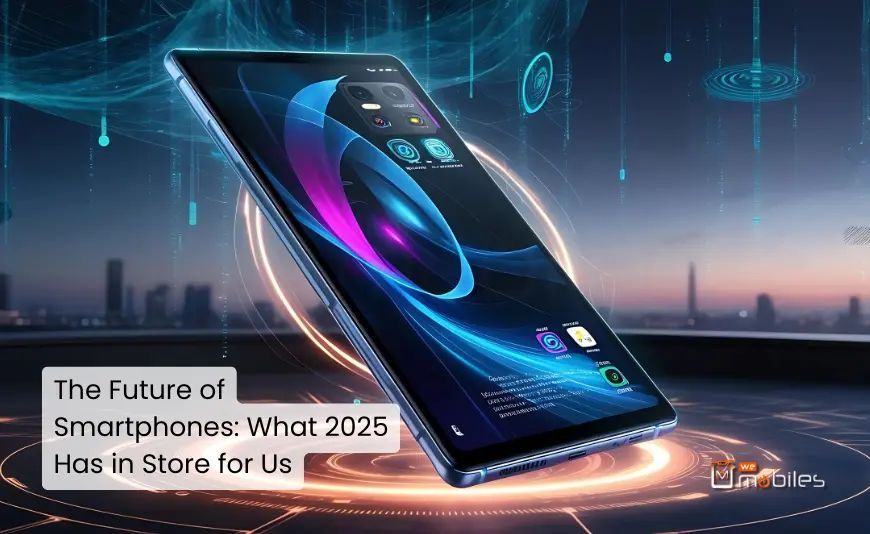
Table of Contents
- Introduction
- The Foldable Revolution: How New Screens Are Changing the Way We Use Phones
- Next-Gen Flagships: Performance Meets Picture-Perfect Shots
- Displays That Wow
- Battery and Charging: All-Day Power and Beyond
- The Smart Revolution: AI At the Wheel
- Your Phone as the Heart of a 5G World
- What’s Next for Smartphones?
- Building Phones We Can Stand Behind
- Wrap-Up: How Phones Keep Changing
Introduction
Smartphones used to be pretty simple devices. Now they change so fast that it’s hard to keep up. Every year we see big jumps in what our phones can do, and 2025 promises to be especially wild. Think edge-to-edge flexible screens that roll up like a magazine and smart tools that learn what you need before you ask. The pocket-sized computers we depend on are growing smarter, faster, and harder to imagine living without.
Yet all this progress can be noisy. Ads shout about the latest “revolution,” while behind-the-scenes nerds argue over specs that most people never use. So how do you tell what really matters? This post strips away the buzzwords and explains the trends that will shape your next upgrade. Whether you just scroll Instagram, play the latest games, or work on the go, if you care about phones, you’ll want to know what’s coming around the corner.
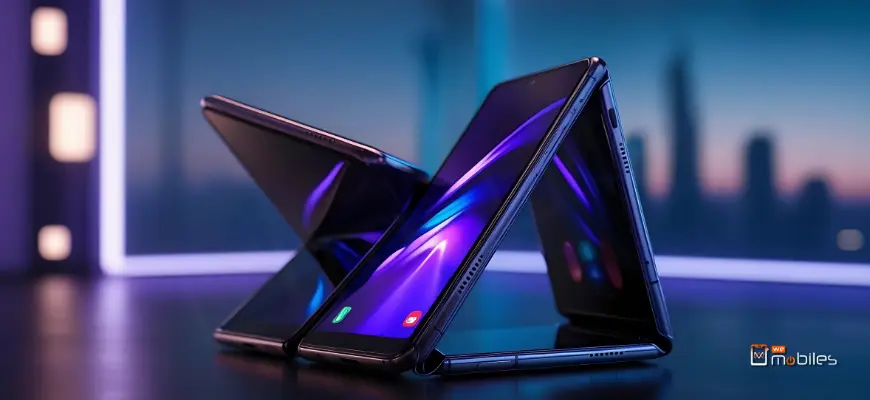
The Foldable Revolution: How New Screens Are Changing the Way We Use Phones
Do you remember the thrill of snapping a flip phone shut? That retro moment has come full circle, only now the “flip” happens with high-tech glass and metal. Foldable smartphones have stopped being fancy prototypes and are settling in as must-have gadgets. The first-generation wobbly hinges and visible creases are mostly gone, replaced by solid hardware that feels luxury without any risk of a break on day one.
Samsung still holds the crown, and its latest Galaxy Z Fold 7 are proof they’re not slowing down. Reports say the next versions could be thinner, have almost invisible wrinkles, and boast even tougher hinges. That lets users turn a regular-size phone into a roomy tablet in one smooth move, something Samsung has turned into a reliable party trick.
Google is also stepping up with the Pixel 9 Pro Fold, and it’s playing to its strengths in software. Thanks to on-device AI inside the new Tensor chip, the phone knows whether it’s open or shut and adjusts the interface instantly. That means you get quick app shortcuts when it’s folded and a split-screen view when it’s wide, turning everyday tasks into something that almost feels playful.
The New Foldable Wave: Xiaomi MIX Flip 2 and Its Rivals
When you think of cutting-edge smartphones, brands like Samsung and Apple usually come to mind first. Yet, companies such as Xiaomi are shaking up the scene in a big way. The recent launch of the Xiaomi MIX Flip 2 shows how fast new challengers are pushing the envelope. With a wallet-friendly price tag, lightning-fast charging, and a camera system co-designed with Leica, the MIX Flip 2 puts premium features within reach of many more buyers.
So, why are foldable phones winning fans? The answer is simple: specs that impress anyone.
Tough Hinge Technology
Most people don’t think about the hinge until something goes wrong, but that’s where the magic happens. Modern foldables now use clever “waterdrop” designs that let the phone close tightly while keeping a super-slim profile. The improved hinges also stand up to everyday stress and even shrug off a few splashes of water, making these devices a lot more user-friendly.
Display That Dares to Flex
Remember when folks said glass couldn’t bend? Today’s Ultra-Thin Glass does just that without cracking. Paired with bright 120Hz LTPO OLED screens, these displays offer silky scrolling and vibrant colours while carefully adjusting the refresh rate to save battery. Designers continue chasing a completely crease-free look, and while we’re not there yet, the picture quality is already jaw-dropping.
Processing Power With a Twist
All those cool moving parts need guts that know how to play along. Chips like the Snapdragon 8 Elite and Google Tensor G4 are built from the ground up to handle dual screens. That means you can flip between apps, drag windows across both panels, and play high-end games without a hitch. More important, they do it while keeping the battery on your side.
Foldable Phones Move Beyond Wow-Factor
It wasn’t that long ago when a smartphone that opened like a book felt downright futuristic. Today, as Dr. Anya Sharma, mobile tech expert, puts it, foldables have matured into “a testament to relentless engineering.” That rare mix of innovative design and everyday usefulness is why many of us are seriously considering a device you can tuck into a pocket yet unfold into a mini-tablet.
Next-Gen Flagships: Performance Meets Picture-Perfect Shots
Even as the foldables grab headlines, today’s flagship slabs are on their own quest for glory. These are the phones that keep setting the pace for speed, battery efficiency, and camera magic, proving that classic designs still have plenty of fight left in them.
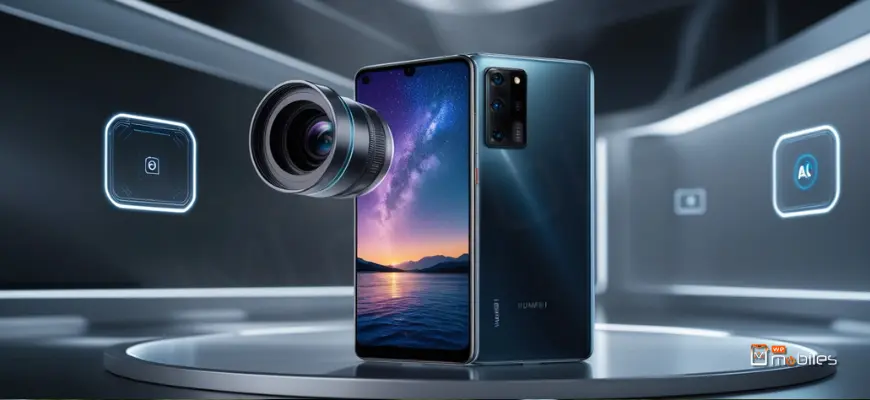
What Powers Them? A Look Under the Hood
Processors That Actually Think
- Apple A18 Pro: Apple fans will welcome a chip that not only flexes raw power but also packs a beefed-up Neural Engine. That means photo filters, real-time language translation, and high-end gaming feel smooth and lag-free, even when you’re pushing the limits.
- Qualcomm Snapdragon 8 Elite: Over on the Android side, this chip is the undisputed workhorse. It fuels flagship models like the Galaxy S25 Ultra and OnePlus 13, delivering jaw-dropping frame rates in graphics-heavy games while handling AI tasks in the background—say, smart battery management or enhanced photography without breaking a sweat.
Chips That Think: The Tensor G4 and MediaTek’s Dimensity 9400+
Google Tensor G4 isn’t built to win benchmarking races, and it doesn’t care. Instead, Google’s homemade chip focuses on making everyday tasks faster and smarter—especially when you talk to your phone or snap a photo. Instructions are handled by specially tuned engines sitting side-by-side with the camera hardware, so a voice command, on-device translation, or live photo effect feels almost…magical. The new Pixel 9 Pro shows off this thinking, seasoning every feature with a dash of machine learning.
Meanwhile, MediaTek’s Dimensity 9400 is stepping out of the shadows. This chip pairs strong performance with solid battery life, managing to keep pace with premium Qualcomm models while often costing less. Gamers rave about its graphics capabilities, streamers praise the 4K display support, and everyday users simply enjoy a phone that never feels sluggish.
Megapixels Matter Less Than Smarts
The annual “megapixel war” rolls on, and yes, 200MP and 108MP sensors now feel almost ordinary. But numbers alone don’t make a photo sing. Smarts do. Algorithms brighten dark corners and slice away noise in seconds. Handheld night shots that once required a tripod now look vivid and sharp; an annoying passerby can be whisked away with a tap; HDR blends highlights and shadows like an old-school darkroom pro.
Telephoto lenses are getting their share of attention, too. The latest periscope systems bring 5x—and even 10x—optical zoom to phones that can still fit in a pocket. Birds perched on a branch, distant fireworks, or a mountain ridge all snap with surprising clarity, every feather and spark rendered as if you were standing right there.
For a showcase of this trend, look at the Huawei Pura 80 Ultra, introduced in June 2025. Its giant 1-inch main sensor collects light like a DSLR, and a dual telephoto setup lets you swap between wide, regular, and super-zoom shots without changing lenses. Professionals are starting to consider it a backup camera, which says a lot.
Video That Rival Studios
Still, stills aren’t the only story. Video features have vaulted into territory once reserved for camera crews. 8K recording is now a checkbox on flagship spec sheets, but refinement matters more than resolution. Cinematic modes add splashy bokeh that tracks moving subjects, while sensor-shift stabilization turns shaky bike rides into smooth thrillers. With gear like this packed inside your pocket, storytelling suddenly feels effortless.
Displays That Wow
AMOLED screens are hard to beat. They blast out eye-popping colors, deliver pitch-black shadows, and nowadays can light up past 3200 nits so you can actually see your smartphone outdoors when the sun is blazing.
Smart 120Hz LTPO refresh rates keep scrolling and gaming silky smooth while quietly saving some battery juice in the background.
As pretty as those screens are, they won’t help if they crack. Luckily, newer Corning Gorilla Armor Glass packs extra scratch and shatter resistance.
Battery and Charging: All-Day Power and Beyond
Most flagship phones now shove in batteries larger than 5000 mAh, making all-day use almost a given.
Pipe in the speed and you’ll spot wired chargers rated at 45 watts, 67 watts, and even jaw-dropping 120 watts that can fill the tank in mere minutes instead of dragging it out for hours.
Qi2 wireless charging lifts that limit, too. Magnetic alignment helps the coil hit pay dirt every time, while reverse wireless charging sneaks in some extra power for your earbuds or watch when you need it.
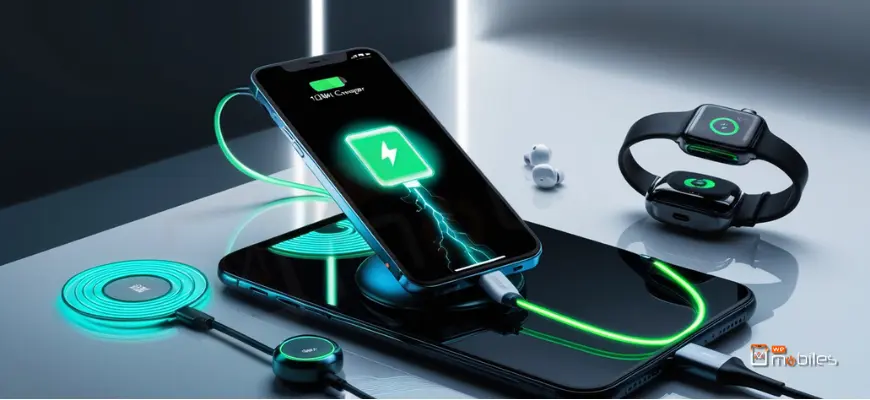
The Smart Revolution: AI At the Wheel
Artificial Intelligence used to sound like science fiction, but today it’s the quiet engine behind nearly everything we do on our phones. We’ve left behind clunky voice prompts and welcome a pocket-sized partner that learns your habits, curates your feeds, optimizes performance, and even translates languages on the fly. The smartphone is smarter than ever, and you hardly lift a finger to make it happen.
“AI isn’t just a tool anymore; it’s starting to feel like the backbone of our gadgets,” notes a recent report from TS2 Tech. That statement really matches the way our phones seem to guess what we want before we even ask.
On-Device Brains, Not Just Clouds
The biggest shift today is happening inside the phone itself. Modern chips—like Qualcomm’s Snapdragon 8 Elite and Apple’s A18 Pro—now sport their own Neural Processing Units, or NPUs. Because so much processing happens on the device, users enjoy faster response times, better privacy, and reliable performance even when the signal drops.
Photography that Thinks for You
Camera tricks once reserved for fancy editing software are now baked right into the phone’s photo app, thanks to AI:
- Magic Eraser lets you swipe away unwanted people or objects without a trace.
- New low-light features brighten nighttime shots as if they were taken in daylight.
- Some phones even use generative AI to whip up wallpapers or swap out backgrounds in a single tap.
A Phone that Knows You
Your device now pays close attention to when you scroll, charge, or open certain apps:
- It will stretch your battery life by dimming the display or pausing updates at night.
- The home screen may rearrange itself to put your favorite apps front and center, depending on the hour.
- You’ll also see timely alerts instead of noisy pop-ups that interrupt your flow.
Smarter Tools, More Done
Productivity features are getting an upgrade, too:
- You can hold a conversation in another language while the phone translates in real time.
- Long meeting notes or voicemail recordings can be skimmed quickly thanks to AI summaries.
- Dictation understands accents, jokes, and pauses, turning speech into text with surprising accuracy.
Smarter Assistants at Your Fingertips
Digital helpers like Siri and Google Assistant are growing up fast. They’re not only sounding more conversational but they’re also handling tricky questions and moving between apps with little fuss. A recent move by Samsung, where it bundles the Perplexity AI assistant into its 2025 smartphones, shows just how serious the industry is about making voice tech a daily, and almost natural, part of our lives.
Stronger Security, Less Worry
Behind the scenes, artificial intelligence is busy keeping our data safe. AI tools now spot unusual network behavior, work alongside biometrics to verify our fingerprints and faces, and sound alarms long before a hacker can strike. Thanks to these features, most of us can unlock our phones, pay our bills, and share sensitive photos with the comfort of knowing that extra layers of protection are quietly working for us.
Your Phone as the Heart of a 5G World
Today’s smartphone isn’t an island; it sits at the center of a sprawling web. Fast 5G, growing AR and VR experiences, and the expanding Internet of Things are weaving a smooth digital thread that wraps around everything we do.
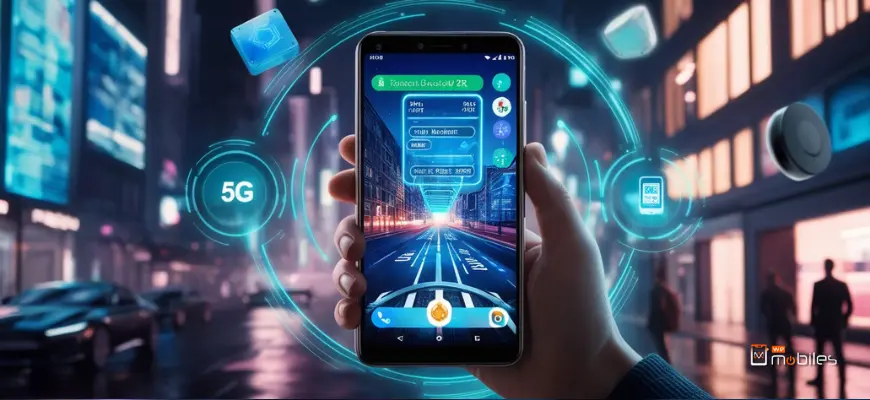
What 5G Really Brings Beyond Fast Downloads
5G was promised to be fast, and it is—yet speed is only half the story. The real magic lies in its super-low lag, which makes cloud gaming, remote surgery, and self-driving cars actually feel safe. The network can also connect countless sensors at once, making smart cities and farms realistic instead of far-fetched. According to the Ericsson Mobility Report from June 2025, a full third of all mobile subscriptions will soon be running on 5G, marking a major shift in how we think about mobile technology.
Augmented Reality and Virtual Reality on Mobile Devices
These days, mobile Augmented Reality apps feel downright useful. You can get turn-by-turn navigation with street names floating over real buildings in Google Maps Live View, you can try on shoes or glasses before clicking “buy,” and classrooms can come alive with 3D dinosaurs or chemical reactions. Even gaming has stepped up, letting you throw digital monsters right onto your living room carpet.
To pull off these tricks without lag, phones need beefy processors and super-smooth displays. That’s why companies have packed their top models with high-refresh-rate panels and powerful chipsets — it makes a huge difference when the digital world has to blend perfectly with the real one.
At Google I/O 2025, the spotlight turned to Android XR, a brand-new platform built specifically for AR and VR gear. This move shows just how serious the industry is about making extended reality a part of everyday life, rather than a pricey headset you use once a year.
Seamless Smart Home and Mobile Security
Your phone has basically become a remote control for everything in your life: the thermostat, the fitness band on your wrist, even the car you drive. The dream of a smart home you can manage straight from your pocket isn’t futuristic any more; it’s what a lot of us do every day.
Of course, that convenience only matters if your data is safe. Mobile security is an arms race, and phone makers are constantly upgrading weapons in the form of biometric locks that recognize your face faster or fingerprints with better accuracy, plus dedicated chips that isolate sensitive information from prying apps. Regular software updates now focus on patching holes the moment they’re found, making OS security more dependable than ever.
At the same time, control has been handed back to users. Privacy dashboards show you what data each app collects, permission settings are clearer, and tracking notices let you decide who can follow your online footsteps. These features won’t stop every threat, but they put some power back in your hands.
What’s Next for Smartphones?
As scientists race to unlock the secrets of quantum computing, engineers are already thinking about how to protect our data from those future supercomputers. That’s why labs around the world are testing “post-quantum” cryptography. By weaving new math into our security systems now, they hope to make sure our bank passwords and private chats stay safe years down the road.
“In today’s world, the most impressive phone isn’t the fastest chip, but the strongest shield,” says Jenna Liu, a cybersecurity consultant who helps businesses lock down sensitive information. Her comment puts the spotlight back on security, reminding us that a slick camera or fancy gaming feature means little if hackers can stroll through our private files.
Building Phones We Can Stand Behind
Raw power and cool features still matter, but today’s buyers also care about the planet. People want gadgets that perform well, yet leave a lighter footprint when the upgrades roll in. That mix of strength and sustainability is shaping the next wave of smartphone design.
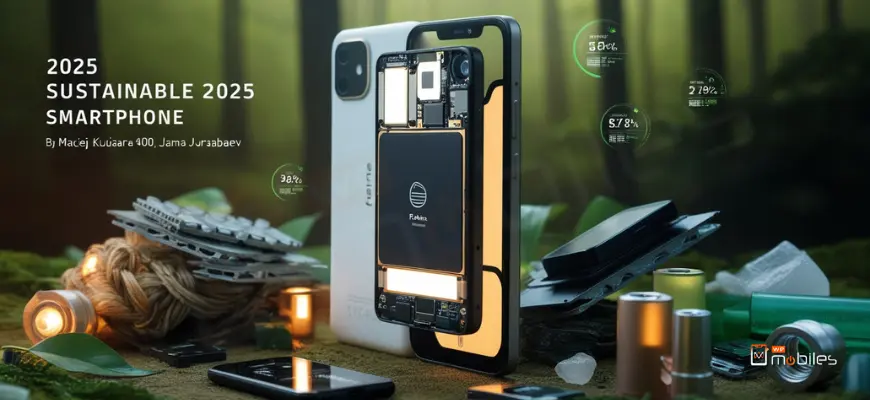
The Right to Repair
At the heart of that conversation is the Right to Repair. Activists, tinkers, and even some phone designers are pushing brands to create devices we can fix ourselves or at least patch up without visiting a pricey repair shop. Fairphone, for example, sells models with screwdrivers and swap-out parts right in the box. Snap-off batteries and easy-access screens aren’t just nostalgic; they help keep phones alive years longer.
Longer Software Life
Big companies are noticing. Samsung and Google now promise seven full years of operating system updates and security patches on select flagship models. By keeping the software fresh, they give older hardware new life, shaving years off the average upgrade cycle and cutting down the mountain of e-waste.
Using Recycled Materials
Manufacturers are also mixing recycled plastics and metals directly into new phones, replacing virgin materials with scraps that might have ended up in a landfill. That small move, repeated millions of times, trims the carbon cost of each shiny slab.
Wrap-Up: How Phones Keep Changing
Look back to the first smartphone you ever saw and it’s amazing to think about how fast things have changed. By 2025, the typical smartphone does much more than make calls and send texts. It folds in half to fit in your pocket, knows when you’re about to take a picture, and downloads movies before you even hit “play.” The best part? Companies are working hard to make sure all of that power is safe for us and for the planet.
On the hardware side, models such as Samsung’s Galaxy S25 Ultra show off an almost mirror-like anti-reflective screen that still works in bright sunlight. Xiaomi’s MIX Flip 2 has a hinge so smooth it feels like a paperback book cracking open for the first time, and rumors swirl about a tri-fold phone from Samsung that could replace a small tablet. Alone, those features are cool; paired with smarter software like Apple Intelligence and Google’s Gemini AI, the devices start to feel like personal assistants that happen to fit in your hand.
The mobile business still depends on sales, of course, yet its bigger goal is easier to spot every year: make life smoother, tear down the barriers that keep people offline, and spark ideas we haven’t even thought of yet. If the past decade taught us anything, it’s that tomorrow’s phone will be more than a gadget it’ll be the gateway to whatever comes next.
We hope you found this article helpful. If you enjoyed it, please share it on social media. Have any questions or suggestions? Leave a comment to join the discussion.
#Tags
Post a Comment
You must be logged in to post comments

0 Comments